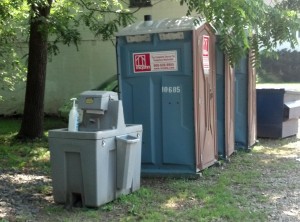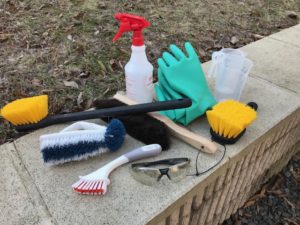 Having a sufficient number of portable toilet facilities and properly cleaning and disinfecting them is even more important with COVID-19. Your labor force may have increased, and your customer volume may be up. You may need to rent additional toilets or have them serviced more frequently if the farm traffic warrants. A good portable toilet company will be prompt and thorough with their servicing and will leave documentation that each unit has been serviced.
Having a sufficient number of portable toilet facilities and properly cleaning and disinfecting them is even more important with COVID-19. Your labor force may have increased, and your customer volume may be up. You may need to rent additional toilets or have them serviced more frequently if the farm traffic warrants. A good portable toilet company will be prompt and thorough with their servicing and will leave documentation that each unit has been serviced.
Between visits from the servicing company, someone on your staff should be trained to clean and disinfect the units at least twice a day. Clean the hard surfaces using a detergent or soap and water followed by rinsing with potable water prior to disinfecting. The Environmental Protection Agency (EPA) maintains a list of disinfectants to use against COVID-19. It is imperative, once you have selected a product, to pay close attention to the contact time on the label which can vary from 1 to 10 minutes. This is the time that the surface MUST remain wet with the product for it to be effective. These disinfectants are for hard surfaces only- do not apply to produce or skin. Wear gloves since these products can irritate the skin.
A household bleach solution can be used to disinfect surfaces. Prepare the solution by mixing 5 tablespoons (1/3 cup) bleach per gallon of water or 4 teaspoons bleach per quart of water. Bleach and disinfectants should be stored in non-clear containers and used within 30 days after opening. Proper ventilation and gloves are necessary when mixing this disinfection solution. For more details on using bleach as a disinfectant please read our earlier Plant and Pest Advisory post. An alcohol solution with at least 70% alcohol can also be used to disinfect.

